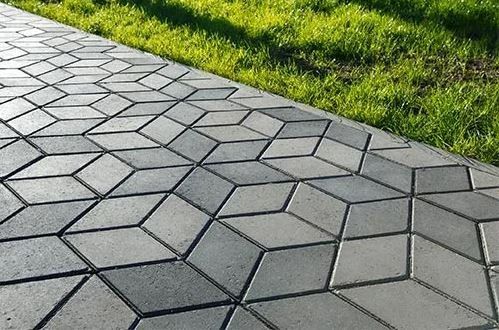If you’ve never had the opportunity to leave a footprint or etch your initials on fresh cleaned concrete but you’ve surely witnessed the work of others. On playgrounds, school walkways and paths across the nation kids’ handprints are visible on concrete surfaces. To celebrate Mother’s as well as Father’s Day, handprints pressed into concrete are the most sought-after presents. The society also honors the biggest stars of Hollywood by creating molds of their feet and hands. This is the basic concept behind stamped concrete changing the boring normal concrete’s natural look into something exciting.
Concrete has been for a long time a preferred material for surfacing. Nowadays, thanks to advances in landscaping and construction there are more options as than before. Concrete stamped with stamps is one of the possibilities.
Stamped Concrete, often called “patterned as printed concrete is concrete which is colored and altered, then shaped to resemble other materials for construction — such as flagstone, brick, tile , and wood. The similar thing with precast, stone or asphalt pavers, however stamped concrete has many more patterns and colors. It also lets you customize with a low cost. If you have a particular style you’re looking for in a patio or pathway you can be sure that stamped concrete will be able to deliver it.
The concrete used for this process is smaller than normal concrete. Normal concrete is usually made up of massive stones within it however, for proper stamping, concrete must be processed to be more smooth. Consistency is a crucial aspect for concrete of all sizes and shapes. Concrete that isn’t pliable enough for molds, however weak concrete won’t keep its shape . When it’s mixed and dried properly stamped concrete can be an affordable and simple option to make new flooring for your home.
In the following page, we’ll take you through the fundamentals of making concrete, and then stamping it. After that, you can finish off your learning by reading about the various designs that are available. Take a look at on the following page.
Pouring Stamped Concrete
Before doing anything it is important to select a stamp- concrete design and purchase the stamps. After this is done it is time to prepare your website.
Once you’ve decided where to put the concrete slab, you can mark the spot by using corner stakes. They’ll serve as the starting point for your design. It is important that you measure and plan your space in accordance with what the size of stamps that you’ll use. As little designing work manually as is possible is ideal.
In the end the stakes will be secured to the exterior of the board that will be used for forming and then placed in a position that is approximately 6 inches (15 centimeters) from the edge on each of the boards. Within the frame you will need to dig out approximately half of a foot (15 centimeters). Then, pack the excavated area, and then spread the gravel and sand around two millimeters (5 cm) in depth. This layer needs to be compacted, too.
Now it’s time to put your forming boards in place However, you need to lay the concrete using an upward slope of one quarter-inch drop per feet of length (.6 centimeters for every 30cm in length). Begin by securing the forming board to the top of your space and then laying the boards in the appropriate order down the slope. The boards should be coated with cooking oil to stop that the cement sticks. The top of the hole using six mil of plastic. Install wire mesh in the entire area, and propped up with small blocks to ensure it is level to the edge of the frame.
Start pouring the concrete in the middle and pour the concrete over the shape. Scraped on the surface of concrete moving two by four along the top of the form, smoothing it. Once the concrete is smooth, put the stamps on the concrete’s surface (coat it with petroleum oil so as to stop them off from sticking). Use a consistent pressure by walking over your stamps, or pressing down with a an enormous mallet.

